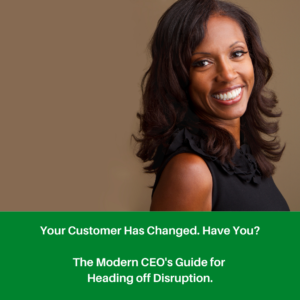Whether you’re a fan of Hallmark Channel or not, the number of loyal viewers has increased during the pandemic. The running joke in my family is anyone can write a Hallmark movie because it’s predictable. Girl meets boy. They break up because of bad advice. They’re back together, ending with a kiss (preferably dressed in red for Christmas). However, when I heard Wonya Lucas had become the CEO of Crown Media Family Networks, the one theme I kept hearing throughout her interview was context.
In 2019, viewers challenged Hallmark when they dropped the same-sex ad from online wedding registry service Zola from their channel and later reversed their decision. The result is it required them to rethink the business strategically because of the context, making it much harder to write that predictable movie script. Firms today are also facing a similar challenge in the context of the pandemic.
The Pandemic Context

Photo Credit: Canva
The pandemic has brought lots of issues into sharp contrast. With 77% of customers having tried a new buying behavior that they’re sticking with, it’s creating more questions for CEOs as they rethink their strategic plan for the long-term. Many CEOs use the SWOT Analysis (Strengths, Weaknesses, Opportunities, and Threats) as the starting point for navigating volatility, uncertainty, and ambiguity.
However, once they’ve identified the firm’s internal strengths and weaknesses and then evaluated external opportunities and threats the company needs to guard against, the analysis often feels lacking. The outcome feels incomplete due to the following:
- Lack of new understanding about current customers and prospects and how they’re evolving.
- Limited insights into how your industry or markets are advancing. The lack of insights could impact your bottom line.
The question is, could Hallmark have spotted that change sooner? Would the SWOT Analysis have felt like a big mistake? If so, why?
The Big Mistake
The SWOT Analysis is a good tool to use when developing your strategy. However, the analysis can feel performative because you didn’t learn anything new about your customers, prospects, markets, or industry. Instead, it ticks the strategic box. It’s what we’ve always done, and it worked. Or did it?
With the increased complexity, ambiguity, uncertainty, and volatility that our customers, markets, and industries are now operating in, it’s not enough to check the boxes. Sure, your business may be growing, but will it continue after the pandemic? Are the low-hanging fruit of opportunities diminished?
Second, when we do a SWOT Analysis, we’re looking at our business through today’s glasses. We see our current customers as we understand the way the markets and industry behave today. We only view the immediate threats and opportunities in front of us because we’ve got a business to run. And we’re hoping tomorrow will take care of itself.
Hallmark recognized the number of viewers had grown, which aligned with their strategic plan. What they missed, as do many companies, is the viewer feedback from the ad indicated their viewers had also changed.
The SWOT Analysis often misses context.
In the next article, we’ll discuss the types of PESTEL outcomes, how Hallmark synchronized their business with their viewers, and the impact context has on decision-making.
 If you want to discover how to turn disruption to your advantage, download “Your Customer Has Changed. Have You? The Modern CEO’s Guide to Heading off Disruption.”
If you want to discover how to turn disruption to your advantage, download “Your Customer Has Changed. Have You? The Modern CEO’s Guide to Heading off Disruption.”



You must be logged in to post a comment.